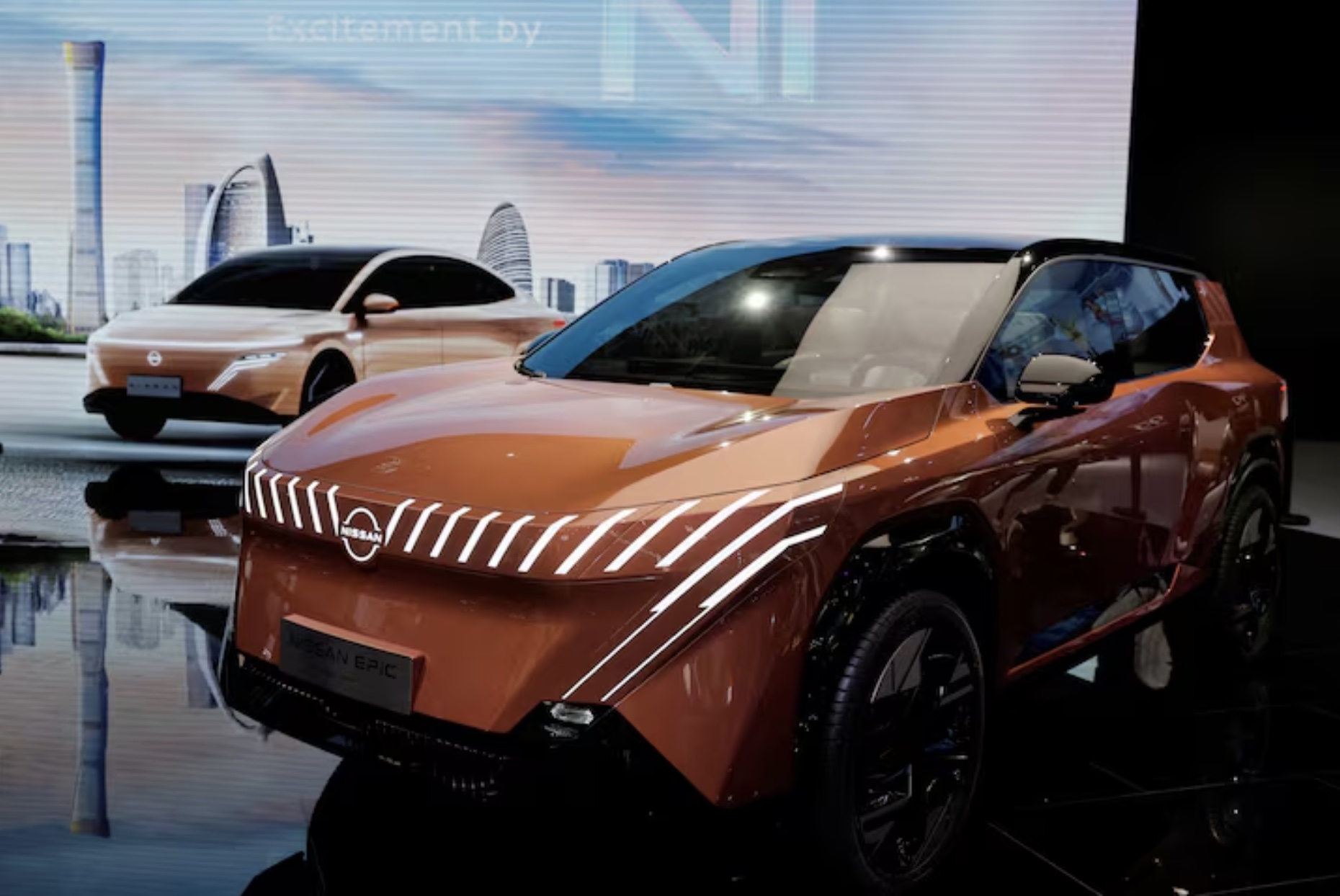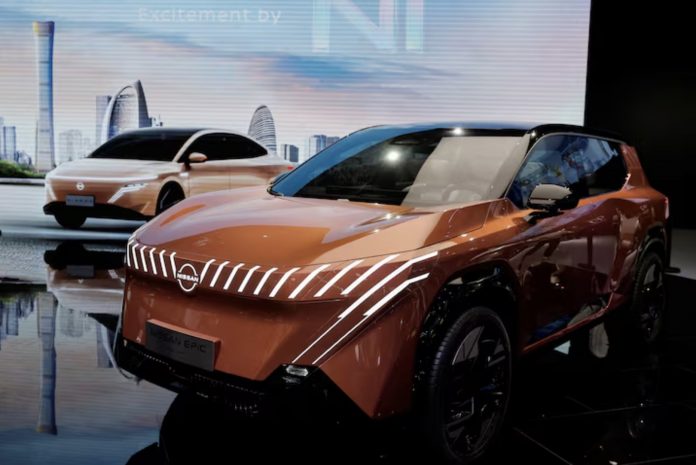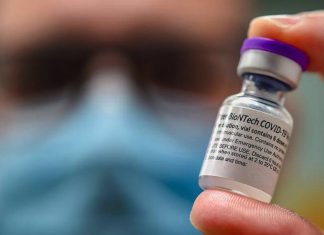บริษัท นิสสัน มอเตอร์ (Nissan Motor) เปิดเผยในวันพฤหัสบดีว่าจะลดพนักงาน 9,000 ตำแหน่ง และลดกำลังการผลิตทั่วโลกลง 20% เพื่อปรับลดค่าใช้จ่ายลง 2.6 พันล้านดอลลาร์ในปีงบประมาณปัจจุบัน ท่ามกลางยอดขายที่ลดลงในจีนและสหรัฐฯ แผนดังกล่าวสะท้อนถึงความเปราะบางของนิสสัน ซึ่งเป็นผู้ผลิตรถยนต์รายใหญ่อันดับสามของญี่ปุ่นที่ยังไม่สามารถฟื้นตัวเต็มที่จากเหตุการณ์ความวุ่นวายซึ่งนำไปสู่การปลดอดีตประธานบริษัท คาร์ลอส กอส์น ในปี 2018 และการลดบทบาทความร่วมมือกับเรโนลต์ (Renault SA)
นิสสันได้ลดการคาดการณ์กำไรสุทธิประจำปีลง 70% เหลือ 150 พันล้านเยน (975 ล้านดอลลาร์) ในวันพฤหัสบดี ซึ่งเป็นการปรับลดคาดการณ์ครั้งที่สองในปีนี้ เช่นเดียวกับผู้ผลิตรถยนต์ต่างชาติหลายราย นิสสันกำลังเผชิญความท้าทายในตลาดจีนที่ผู้ผลิตรถยนต์ในท้องถิ่นอย่าง BYD และค่ายอื่น ๆ กำลังครองส่วนแบ่งตลาดด้วยรถยนต์ไฟฟ้าและไฮบริดที่มีเทคโนโลยีล้ำสมัยและราคาที่เข้าถึงได้
แต่ปัญหาที่ใหญ่กว่าสำหรับนิสสันอาจอยู่ที่สหรัฐอเมริกา ซึ่งบริษัทยังขาดไลน์อัพรถยนต์ไฮบริดที่น่าเชื่อถือ ซึ่งแตกต่างจากคู่แข่งจากญี่ปุ่นอย่างโตโยต้า (Toyota) ที่มียอดขายรถยนต์ไฮบริดเบนซิน-ไฟฟ้าพุ่งสูง ซีอีโอนิสสัน มาโคโตะ อุชิดะ กล่าวว่า บริษัทมองพลาดเรื่องความต้องการรถยนต์ไฮบริดในสหรัฐฯ และยอมรับว่า “เราไม่คาดการณ์ว่าจะมีการเติบโตของ HEV (รถยนต์ไฟฟ้าลูกผสม) อย่างรวดเร็วแบบนี้” พร้อมเสริมว่า การปรับเปลี่ยนในโมเดลหลักบางรุ่นไม่ได้เป็นไปอย่างราบรื่นตามแผน
บริษัทซึ่งตั้งอยู่ในเมืองโยโกฮาม่าวางแผนจะลดพนักงาน 9,000 ตำแหน่ง หรือประมาณ 6.7% ของพนักงานทั่วโลกที่มีทั้งหมด 133,580 คน โดยได้ยกเลิกการคาดการณ์กำไรสุทธิ เนื่องจากการปรับโครงสร้างที่ดำเนินการอยู่ซึ่งคาดว่าจะลดค่าใช้จ่ายลง 400 พันล้านเยน (2.6 พันล้านดอลลาร์) ในปีงบประมาณนี้
อุชิดะกล่าวว่า เขาจะสละเงินเดือนส่วนตัว 50% ต่อเดือนตั้งแต่เดือนนี้ และคณะกรรมการบริหารคนอื่น ๆ ก็จะสมัครใจลดเงินเดือนเช่นกัน
นิสสันจะลดกำลังการผลิตลง 20% ลดระยะเวลาในการพัฒนารถยนต์ใหม่ให้เหลือเพียง 30 เดือน และเพิ่มความร่วมมือกับพันธมิตรเช่น เรโนลต์และมิตซูบิชิ (Mitsubishi Motors) แต่อุชิดะปฏิเสธที่จะเปิดเผยรายละเอียดเกี่ยวกับระยะเวลาและสถานที่ที่จะมีการลดพนักงานและการผลิต
นอกจากนี้ นิสสันยังวางแผนขายหุ้นในมิตซูบิชิสูงสุด 10% เพื่อระดมทุนได้สูงสุดถึง 68.6 พันล้านเยน (445.45 ล้านดอลลาร์)
บริษัทผู้ผลิตรถยนต์มีสายการผลิต 25 แห่งทั่วโลกและกำลังวางแผนลดกำลังการผลิตสูงสุดในสายการผลิตเหล่านี้ โดยหนึ่งในวิธีคือการปรับความเร็วของสายการผลิตและเปลี่ยนเวลาทำงานในโรงงาน ฮิเดยูกิ ซากาโมโตะ หัวหน้าเจ้าหน้าที่ฝ่ายโมโนซึคุริ กล่าว
กำไรจากการดำเนินงานในไตรมาสที่สอง (เดือนกรกฎาคม-กันยายน) ลดลง 85% เหลือ 31.9 พันล้านเยน ซึ่งต่ำกว่าที่นักวิเคราะห์คาดการณ์ไว้ที่ 66.8 พันล้านเยน ยอดขายทั่วโลกของนิสสันลดลง 3.8% เหลือ 1.59 ล้านคันในช่วงครึ่งแรกของปีงบประมาณ โดยเฉพาะในจีนที่ยอดขายลดลง 14.3% ในขณะที่ยอดขายในสหรัฐฯ ลดลงเกือบ 3% หรือประมาณ 449,000 คัน ซึ่งทั้งสองตลาดนี้คิดเป็นสัดส่วนเกือบครึ่งหนึ่งของยอดขายทั่วโลกของนิสสัน
บริษัทฮอนด้า มอเตอร์ (Honda Motor) รายงานเมื่อวันพุธว่ากำไรจากการดำเนินงานในไตรมาสที่สองลดลงอย่างไม่คาดคิดถึง 15% จากยอดขายที่ลดลงในจีน ส่งผลให้หุ้นของฮอนด้าตกลง 5%
(1 ดอลลาร์ = 154.0000 เยน)
Nissan to axe 9,000 jobs, cut production on weak China, US sales

Nissan Motor (7201.T), opens new tab will cut 9,000 jobs and 20% of its global manufacturing capacity, the automaker said on Thursday, as it scrambles to reduce costs by $2.6 billion in the current fiscal year amid a sales slump in China and the U.S.
The plans underline the vulnerability of Japan’s third-largest automaker, having never fully recovered from the disarray that led to the 2018 ouster of former chairman Carlos Ghosn and scaling back of the partnership with Renault SA (RENA.PA), opens new tab.
Nissan cut its annual profit outlook by 70% to 150 billion yen ($975 million) on Thursday, the second time it lowered the forecast this year. Like many foreign automakers, it is struggling in China where BYD (002594.SZ), opens new tab and other local manufacturers are gobbling up market share with affordable EVs and hybrids that boast advanced technology.
But Nissan’s graver problem may be in the United States, where it lacks a credible line-up of hybrid cars. That’s in contrast to Japanese rival Toyota (7201.T), opens new tab, which has seen a boom in demand for gasoline-petrol hybrid cars.
Nissan misread demand for hybrids in the United States, CEO Makoto Uchida told a press conference.
“We didn’t foresee HEVs ramping up this rapidly,” he said, referring to hybrid EVs.
“We did start to understand this trend towards the end of last fiscal year,” he said, adding that making some changes to core models didn’t go as smoothly as planned.
The Yokohama-based company is planning to cut 9,000 jobs, equivalent to 6.7% of its 133,580 global employees.
It scrapped its net profit forecast due to ongoing restructuring efforts, which it said would reduce costs by 400 billion yen ($2.6 billion) this fiscal year.
Uchida said he would voluntarily forfeit 50% of his monthly compensation starting this month and the other executive committee members will also voluntarily take a pay cut.
Nissan will cut its production capacity by 20%, reduce vehicle development lead time to 30 months and deepen collaboration with its partners including Renault and Mitsubishi Motors (7211.T), opens new tab, it said.
Uchida declined to give any details about the timing or location of the job and production cuts.
Nissan is also selling up to 10% of its stake in Mitsubishi Motors to raise up to 68.6 billion yen ($445.45 million).
The automaker has 25 vehicle production lines globally and plans to reduce the maximum capacity of those, Chief Monozukuri Officer Hideyuki Sakamoto told reporters.
One method would be to change line speeds and shift patterns in factories, he said.
Operating profit for the July-September second-quarter tumbled 85% to 31.9 billion yen, far below an LSEG consensus estimate of 66.8 billion yen.
Nissan’s global sales fell 3.8% to 1.59 million vehicles for the first half of the financial year, largely due to a 14.3% drop in China.
U.S. sales fell almost 3% to about 449,000 vehicles. Together, the two markets account for nearly half of Nissan’s global sales by volume.
Honda Motor (7267.T), opens new tab reported on Wednesday a surprise 15% drop in second-quarter operating profit due to a heavy sales drop in China, sending shares in Japan’s second-largest automaker down 5%. ($1 = 154.0000 yen)
By Daniel Leussink, Reuters

















